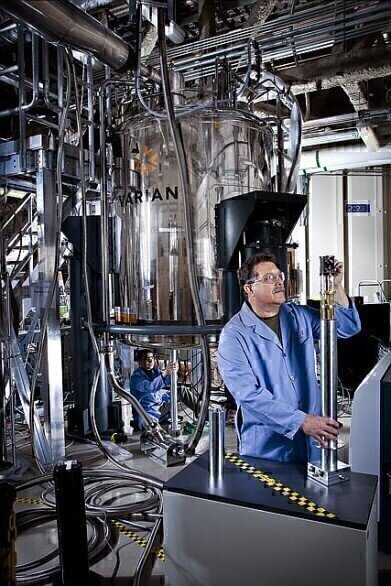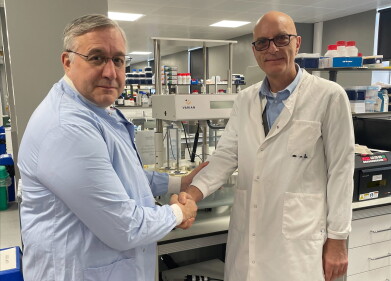News
NMR Basics 101 — How to Tune a Probe
Aug 30 2014
The probe is at the heart of an NMR spectrometer, in the centre of the applied magnetic field. The probe holds the:
- Sample and sample spinning apparatus
- Radio frequency (RF) coils
- Temperature controller
- Detector coils
The sample tube containing the sample is placed inside the probe. The sample tube can be various sizes depending on the type and size of the sample. An article showing the use of different probes for different samples is: Features Added To Mqc Benchtop NMR Analyser.
There are methods to shield the main magnetic field from the effects of the fields generated inside the probe. This can simply be an electric circuit.
Spinner and Temperature
The temperature circuit in the probe maintains a constant temperature; this is needed when the effects of temperature on the sample are being measured. The circuit monitors the sample temperature and adjusts the flow of heating or cooling agent, usually a gas, around the sample.
The purpose of the sample spinner is to rotate the NMR sample tube about its axis. In doing so, each spin in the sample located at a given position along the Z-axis and radius from the Z-axis, will experience the average magnetic field in the circle defined by this Z and radius. This procedure produces a narrow line width in the resulting spectrum.
Radio Frequency and Detector Coils
In many NMR spectrometers, the RF and detector coils are the same coils. These coils deliver a pulse of energy at the frequency needed for the nuclei under investigation. The same coils will also act as detectors for the RF signal from the sample.
For a defined NMR experiment, the probe needs to be tuned for the nucleus under consideration. Different nuclei need different frequencies, and so the probe will need retuning for each nucleus investigated. If a different sample matrix is used, a retune will be necessary, especially if a different solvent type is used to prepare the sample.
Signal-to-Noise Ratio
The signal-to-noise (S/N) ratio is a measure of an instrument’s sensitivity. S/N is proportional to the square root of the number of scans (or experiments). If the S/N ratio is reduced by a factor of 10 due to increased noise in the circuits, 100 more scans will have to be made to achieve the original sensitivity.
Tuning is important so that the spectrometer is operating at the most sensitive possible. The signal received from a sample is very small and so the noise in the circuits needs to be reduced to a minimum value.
Tuning a Probe
The term tuning involves two connected activities:
- Tuning the coil to the required frequency
- Matching the coil to the correct impedance ensuring its efficient operation
The circuit requiring tuning is composed of inductive (L) and capacitive (C) elements — the L and C values determine the frequency of the RF circuit. A circuit is tuned by adjusting the capacitor values until the required frequency is reached.
Image Source
Digital Edition
Lab Asia 32.2 April
April 2025
Chromatography Articles - Effects of small deviations in flow rate on GPC/SEC results Mass Spectrometry & Spectroscopy Articles - Waiting for the present to catch up to the future: A bette...
View all digital editions
Events
Apr 09 2025 Tokyo, Japan
Apr 22 2025 Hammamet, Tunisia
Apr 22 2025 Kintex, South Korea
Analytica Anacon India & IndiaLabExpo
Apr 23 2025 Mumbai, India
Apr 23 2025 Moscow, Russia



















